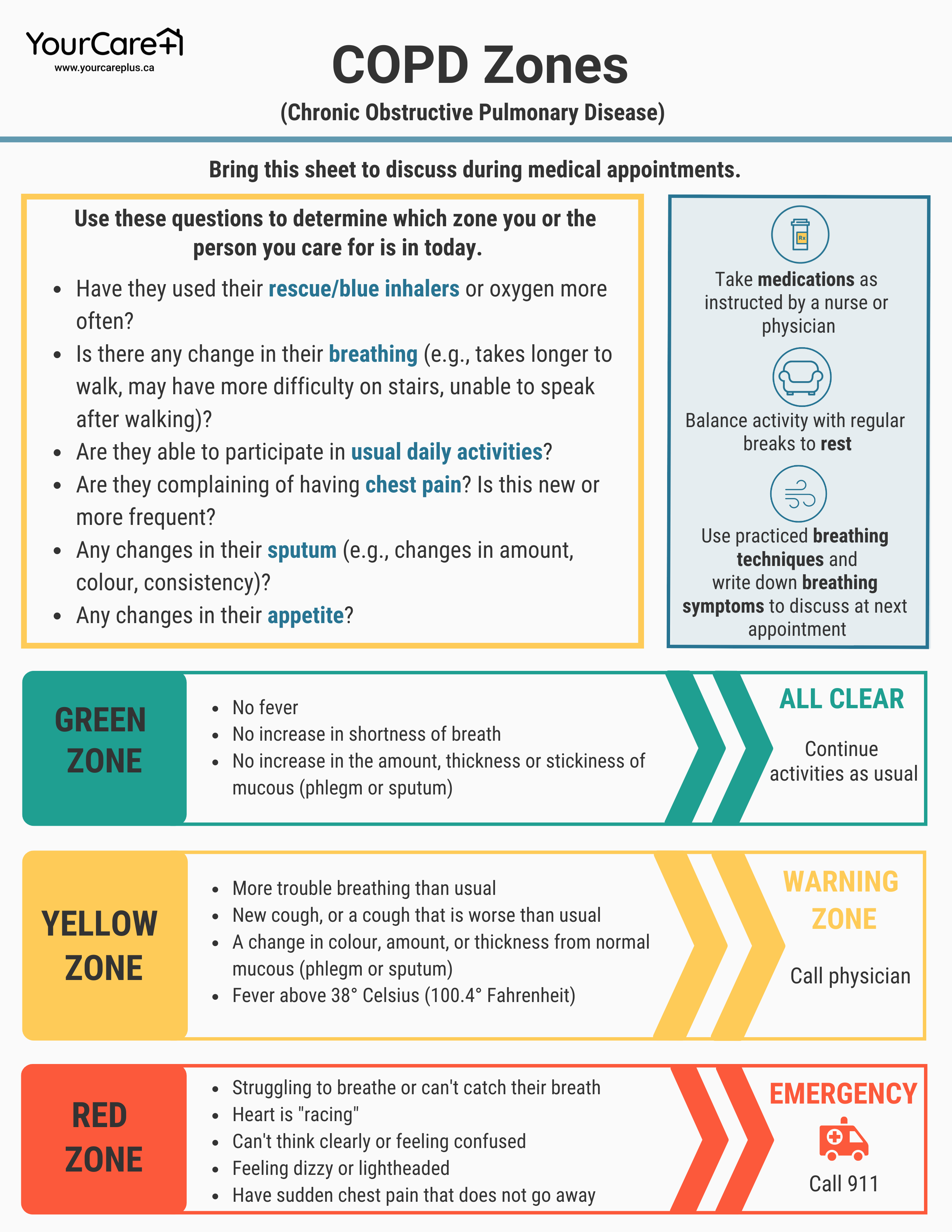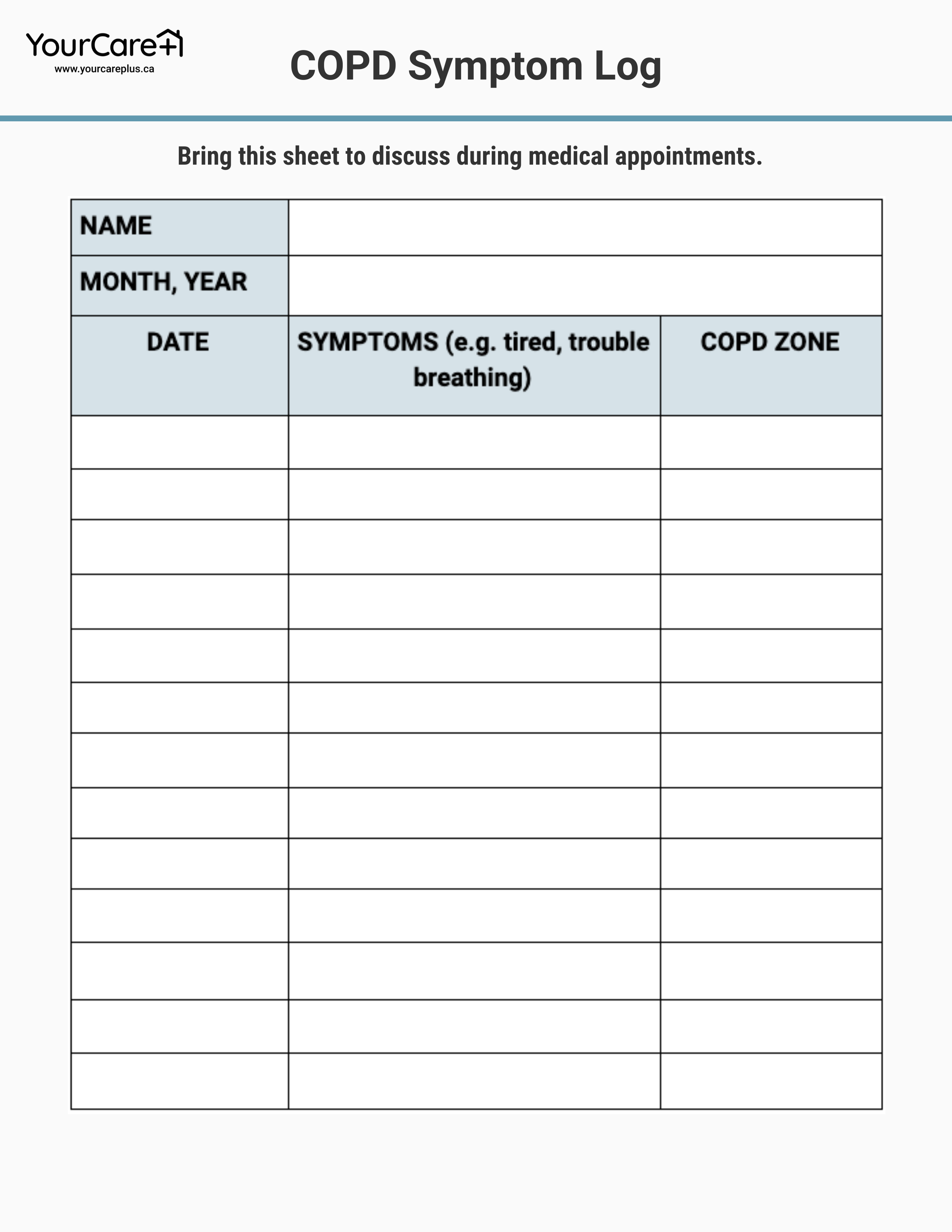What is it?
How can it help me?
Watch the video below to learn about Malik and his wife’s journey with managing COPD.
VIDEO SUMMARY
- Malik is 67 years old and lives with his wife at home. Malik smokes cigarettes but has cut back in recent years.
- One day, Malik develops a bad cough and chest pain. Fearing it may be a heart attack, his wife calls 911 and Malik is taken to the hospital. He is diagnosed with pneumonia and COPD.
- Malik is referred to a home care agency and meets with a care coordinator. He is referred to a nurse who teaches him skills and introduces the COPD Zone Sheet and Symptom Log to help manage symptoms and avoid emergencies.
COPD Zone Sheet
Asking the questions below daily can help determine which zone someone is in:
Have they used their rescue/blue inhalers or oxygen more often?
Is there any change in their breathing (e.g., takes longer to walk, may have more difficulty on stairs, unable to speak after walking)?
Are they able to participate in usual daily activities?
Are they complaining of having chest pain? Is this new or more frequent?
Any changes in their saliva or mucus, also known as sputum (e.g., changes in amount, colour, consistency)?
Any changes in their appetite?
GREEN ZONE
All clear
Continue activities as usual
No fever
No increase in shortness of breath
No increase in the amount, thickness or stickiness of mucous (phlegm or sputum)
All clear
Continue activities as usual
YELLOW ZONE
Warning Zone
Call physician
No increase in the amount, thickness or stickiness of mucous (phlegm or sputum)
New cough, or a cough that is worse than usual
Increased or new shortness of breath
A change in colour, amount, or thickness from normal mucous (phlegm or sputum)
Fever above 38° Celsius (100.4° Fahrenheit)
Warning Zone
Call physician
RED ZONE
Emergency
Call 911
Struggling to breathe or can't catch their breath
Heart is 'racing'
Can't think clearly or feeling confused
Feeling dizzy or lightheaded
Have sudden chest pain that won't go away



